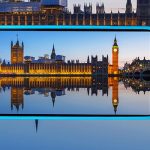The National Audit Office (NAO) is closely examining the government’s multi-year discount deals with major tech companies like Microsoft and Amazon Web Services (AWS). They allege that these arrangements aren’t fully leveraging the collective buying power of the public sector.
In a detailed 55-page report on how the UK government approaches technology procurement, the NAO raised concerns about these deals. Typically, public sector IT buyers receive discounts from a select group of suppliers through these agreements. The Crown Commercial Service (CCS) oversees these arrangements and lists 11 technology-related memorandums of understanding (MoUs) on its website. CCS aims to use national buying power to secure better pricing for these products and services.
Despite CCS promoting these agreements as crucial for ensuring public sector buyers receive the best deals, the NAO has criticized the lack of information regarding the actual benefits derived from these MoUs. Without this data, the government finds itself at a disadvantage when negotiating with large tech companies.
The report highlighted that while the government has negotiated these MoUs to operate as a single customer for volume discounts—a strategic approach in relationship management—there’s a significant gap in understanding the demand from various departments for digital services. The NAO noted, “There’s no evaluation to compare it against suppliers’ appetite, and there’s very little information on supplier performance for future sourcing decisions.”
Because of this data deficiency, the UK government struggles to understand future demand for tech services. The NAO stressed that reliable data is essential for informed negotiations with big suppliers.
Concerns extend beyond individual agreements. The report criticized the government’s overall tracking of tech spending, pointing out knowledge gaps and inconsistencies. The government doesn’t have a clear picture of its expenditures on digital change programs or with major suppliers, which hampers its ability to make strategic purchasing decisions.
While estimates suggest the government spends at least £14 billion annually on digital procurement, officials admit this figure may be incomplete. For instance, the CCS failed to keep track of when its MoU with Microsoft was set to expire, leading to last-minute negotiations requiring assistance from other government parts.
Specifically, the now-closed Central Digital and Data Office was brought in to help renew the three-year Digital Transformation Agreement 2021 with Microsoft after original terms had not been agreed upon before the end date.
Efforts to address these issues have also been highlighted in a recent report from the Department for Science, Innovation and Technology. It pointed out that the public sector isn’t maximizing its buying power due to a lack of a unified digital sourcing strategy, resulting in a fragmented purchasing approach. The NHS, for example, has 209 secondary care entities that purchase their own infrastructure, while over 320 local councils negotiate separate agreements.
Furthermore, the report noted that many commercial teams lack the expertise needed to secure optimal contracts, and digital teams often struggle to effectively manage vendor relationships. Although initiatives have been made to consolidate buying power through frameworks established by CCS and other government bodies, such efforts aren’t mandatory and are not consistently implemented.









